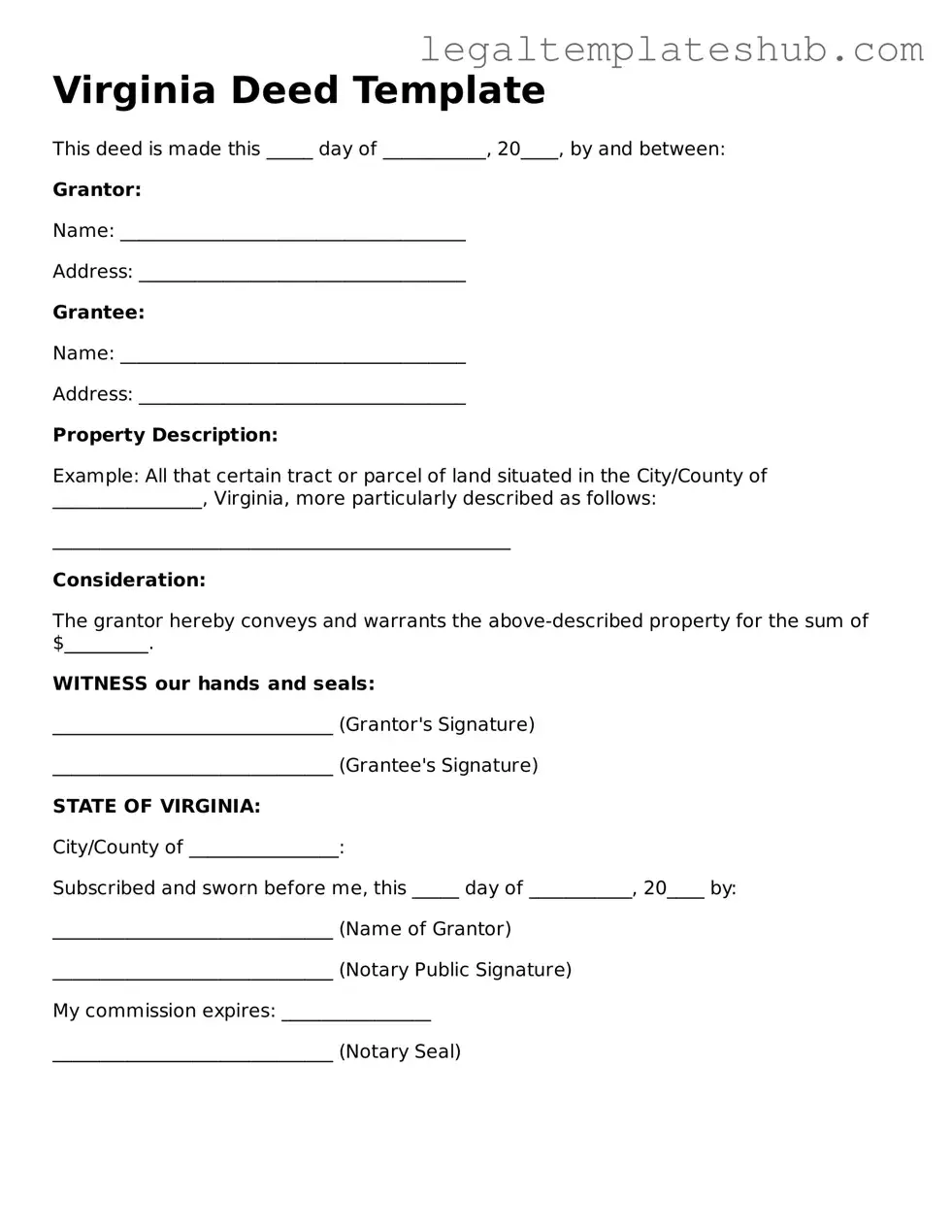Printable Deed Document for Virginia
A Virginia Deed form is a legal document used to transfer ownership of real property from one party to another. This form outlines the details of the transaction, including the names of the parties involved and a description of the property. For those looking to complete a property transfer in Virginia, filling out this form is an essential step; click the button below to get started.
Access Editor
